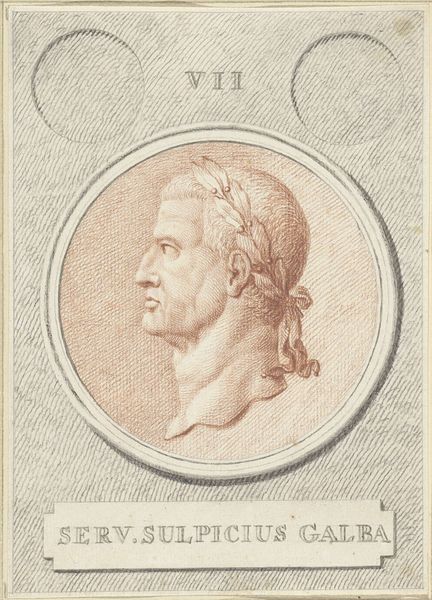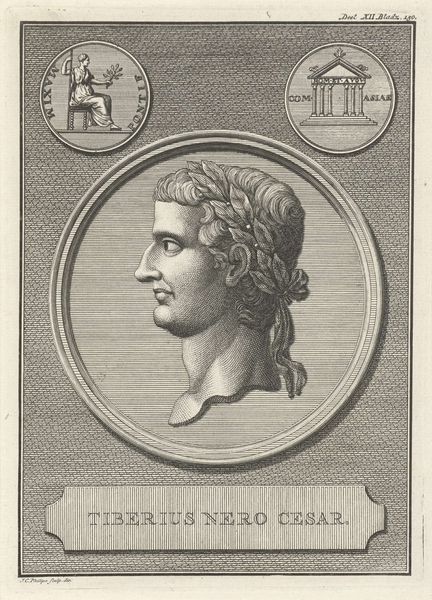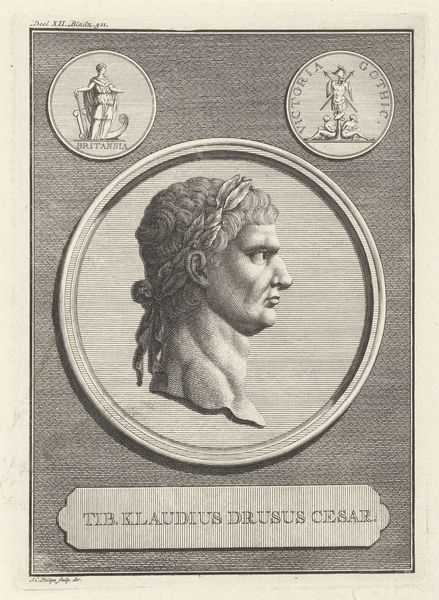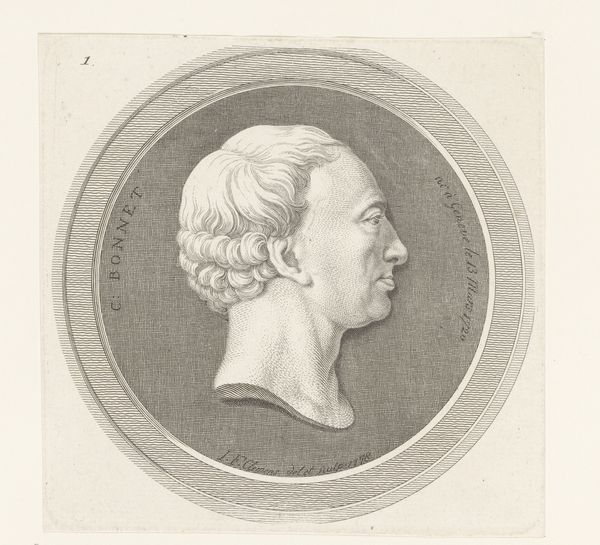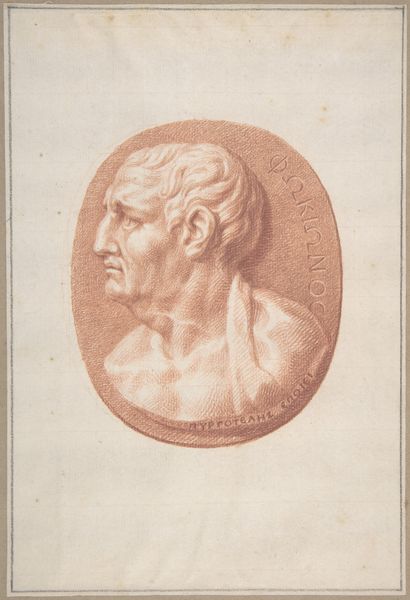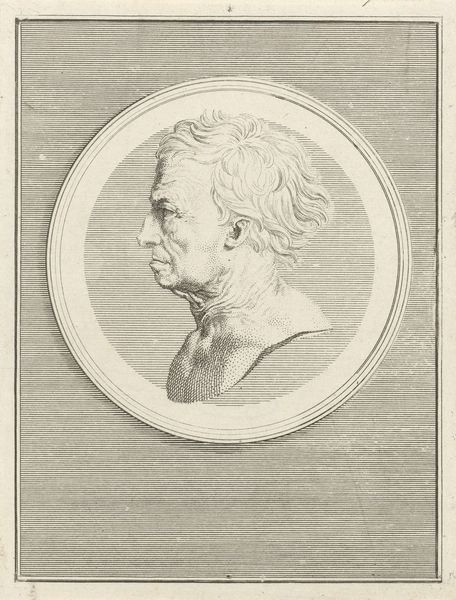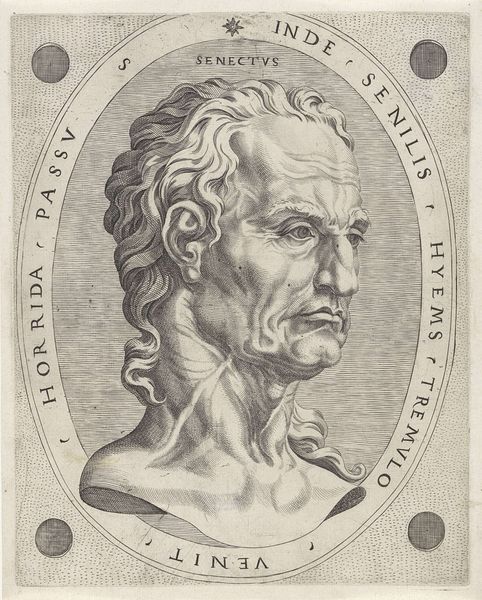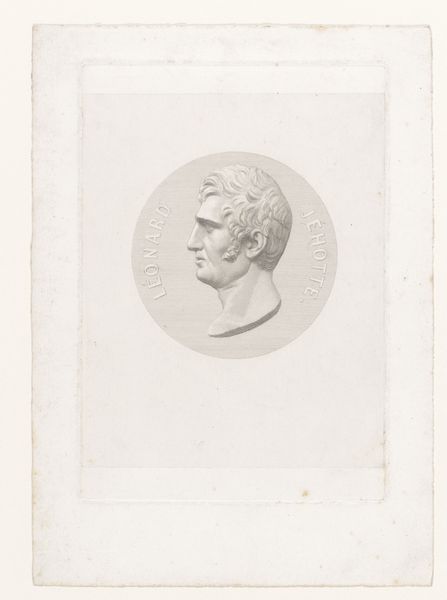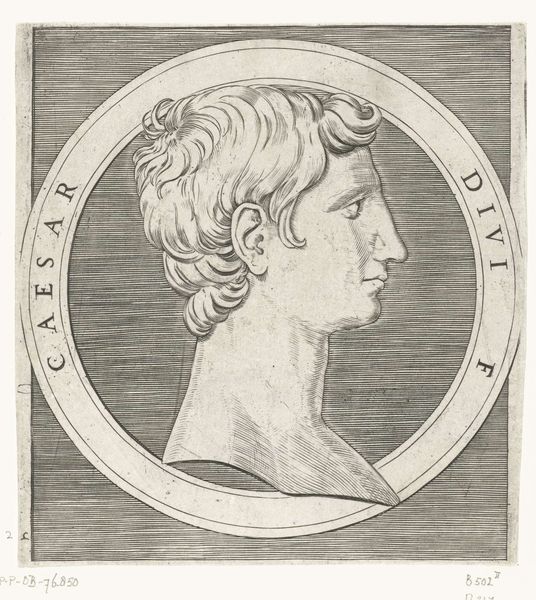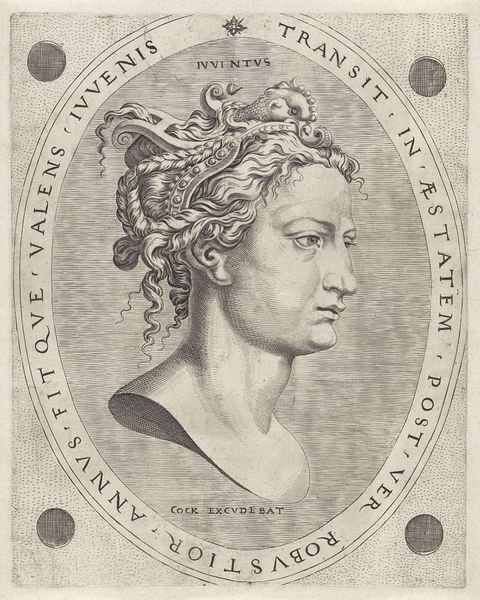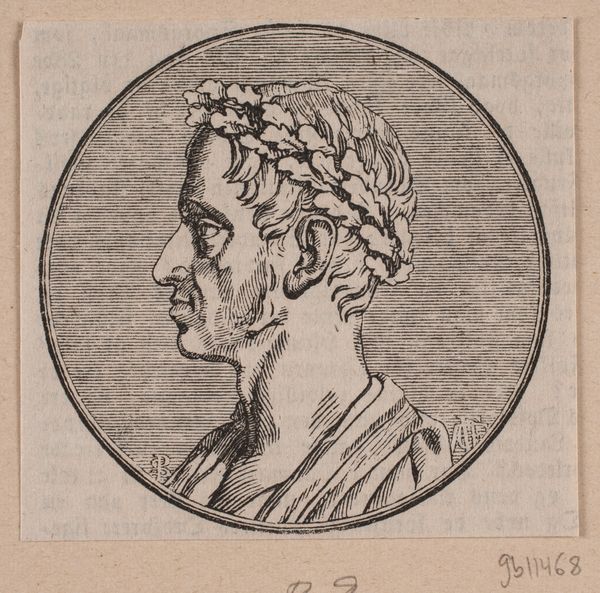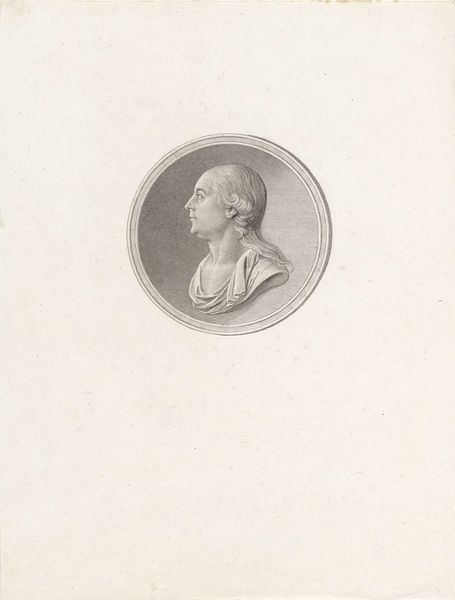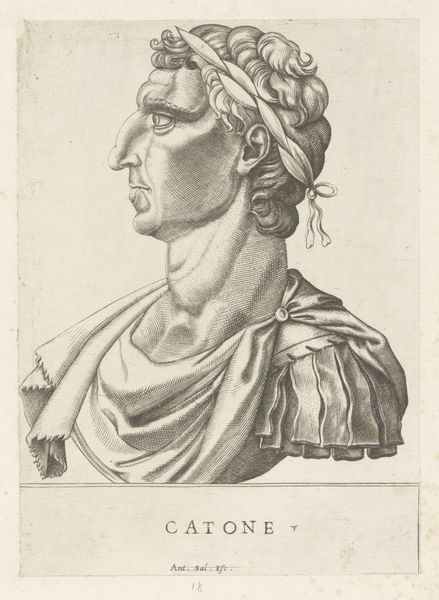
print, paper, engraving
#
portrait
#
toned paper
# print
#
classical-realism
#
paper
#
form
#
11_renaissance
#
ancient-mediterranean
#
line
#
watercolour illustration
#
history-painting
#
academic-art
#
engraving
Dimensions: height 178 mm, width 127 mm
Copyright: Rijks Museum: Open Domain
Curator: We are looking at a print titled "Portretmedaillon van Julius Caesar", created between 1736 and 1775. It’s currently held in the Rijksmuseum collection, and was made by Jan Caspar Philips using engraving on paper. What are your initial thoughts? Editor: Hmm, immediately I think "refined." It’s got a cool restraint to it; a sepia-toned Caesar, slightly faded but ever the strongman, enshrined in this tidy little circle. It's academic, almost bureaucratic, a feeling intensified by those crisp parallel lines framing everything. Curator: Indeed. The parallel lines and circular format hark back to the tradition of Roman portrait medallions. These forms held cultural currency as embodiments of power, leadership, and history that artists continued referencing through the Renaissance and beyond, into the 18th century when this piece was made. What associations are conjured when you see this piece? Editor: Oh, the weight of expectation! Caesar becomes this distilled ideal, but it’s almost tragic. Knowing his story, the “Ides of March” echoes distantly in my mind—a man made a symbol, ripe for a fall. Even the laurel wreath looks like a fragile halo here. Curator: An interesting read. The wreath certainly signifies triumph and status, a symbol repeated throughout visual culture as shorthand for victory, not just in classical imagery but right through to the modern day. Note also the way his hair is styled. The engraver clearly wanted to convey some sense of historical accuracy through such details. Editor: I suppose. But you strip away his individual complexities in a print like this, turning him into an artifact to be scrutinized. See how those twin circular indentations bookend his medallion? Almost like labels on museum specimen jars. This makes you contemplate: where do image and the lived experience intersect when the actual individual is long gone and we only see their distilled and reproduced selves. Curator: Precisely! Consider how powerful symbols are. Despite everything, Julius Caesar endures as more than just a historical figure—he is a loaded idea. Through an image like this print we see his ideals made visually manifest. Editor: So, we take an image of an image… interesting. I feel I am seeing his memory now from so far away. Perhaps he too might look on, a faded profile gazing back across the centuries in bewildered, sepia-toned amusement. Curator: I appreciate your unique outlook on this figure and work, thinking about image and lived experience across eras. Thanks! Editor: Pleasure's all mine. That was...enlightening.
Comments
No comments
Be the first to comment and join the conversation on the ultimate creative platform.
